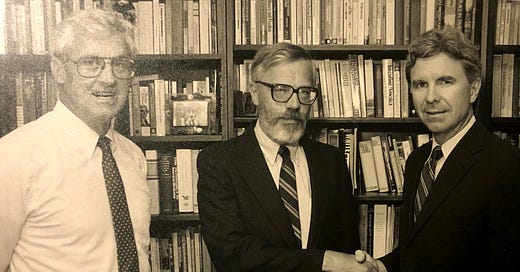Artisans in Williamsburg - 1700-1800
Harold Bledsoe Gill, Jr.'s unpublished manuscript from 1994
The Historic Trades of Colonial Williamsburg were the primary focus of my late father, Harold B. Gill, Jr. as a research historian over the course of his long career. One work that did not get published during his lifetime is “Artisans in Williamsburg - 1700-1800” which is published here for the first time. It is being transcribed posthumously by his son, Harold B. Gill, III; Executive Director of The Harold B Gill Foundation, LLC.

Introduction
The history of preindustrial artisans has only recently attracted the attention of scholars as a field for serious study. Most of the studies done concerning early artisans has been done by museum curators in connection with the artifacts they produced. Of course, a great deal of writing has been produced discussing the Industrial Revolution and labor history in the nineteenth century. Artisans in the south, however, have been generally neglected or dismissed as unimportant. 1 Still, a close look at the skilled workers in eighteenth-century Virginia shows that they played an important role in development of the colony and that they were successful in maintaining their European craft traditions.
The Historic Trades Department has had a long and important history as a part of the Colonial Williamsburg Foundaiton. Its programs have fascinated and inspired untold numbers of scholars and visitors throught its demonstrations and interpretation of colonial technology. It is foremost in the world in its efforts to preserve and interpret the techniques of production that were in common usage before the Industrial Revolution. Over the years, much energy and expense has been devoted to the rediscovery of techniques and processes that have, by and large, been long forgotten. It has also been unitiring in its attempts to find people who are still engaged in processes that have largely been replaced by machinery or become otherwise obsolete. Once found, some of these people have been persuaded to come to Williamsburg to train younger staff members, passing the skills to a new generation, who, in turn, continue to train others. It can be said with accuracy that if it was not for Colonial Williamsburg, some skills would have been lost and forgotten.
It is significant, that the tool exhibit mounted at the Dewitt Wallace Decorative Arts Gallery from January 1994 through June 1995 has enjoyed such interest and the catalog prepared for the exhibit has now gone into its third printing. This success demonstrates the interest in the history of technology by the general public. Many people clearly visit Colonial Williamsburg to witness skilled workers producting goods “by hand.”
The attraction that the Historic Trades program has for the public demands that it be continued and improved. This monograph attempts to show that articans played an important part in the life of Williamsburg citizens as well as citizeens of the entire colony in the eighteenth century. Most of the production of local artisans was consumed by the local population. There was little, or none, produced for export. This fact has led some scholars to believe that the community of craftsmen in colonial Virginia was insignificant. There was a substantial number of artisans in the town throughout the period and a significant increase in their numbers during the early years of the Revolutionary War. Without the cooperation of the artisans throught the colonies, the Revolutionary War probably could not have been won by the Americans.
Therefore, this monograph attemps to present a concise discussion of the history of tradesmen in Williamsburg. It shows that the community of artisans made up a large part of the population of the colonial town and that these people played important roles in the life of the town. Because they had a vital interest in the prosperity of Williamsburg, many took part in civic activities. We know little of the activities of the town government itself because the city records have not survived. However, based on the records of other towns, artisans took an active part. The condition of the streets and accomodations for visitors, for example, were of vital interest to tradesmen. In Norfolk County, for instance, the artisans tended to vote as a block and were able to elect their candidates to the House of Burgesses.2 There is no reason to think that Williamsburg artisans behaved any differently than those in other Virginia communities.
The term “artisan” as used here designates anyone trained to manuarl dexterity of skill in a trade. Other expressions used such as craftsman and artificer are understood to have the same definition. Even though farmers and planters may be considered as artisans by that definition, it is limited to those people — masters, servants, or journeymen — who worked in certain trades such as carpenters, bricklayers, bakers, etc., but not including such people trained as physicians or lawyers. We are largely, but not exclusively, concerned with those artisans who created objects by transforming raw materials into useful commodities.
The Chapters of this work, aside from introductory paragraphs written by the transcriber/editor, will reside behind the paywall for paying subscribers to “Harrowings.” It will be worth the investment!
See, for example, W. J. Rorabaugh, The Craft Apprentice: From Franklin to the Machine Age in America (New York, 1986), pp. 9 and 179
Norfolk County Voter List. Norfolk Co. Deed Book 24, 1767-1770, ff. 112-115. See also Brent Tartar, ed., The Order Book and Related Papers of the Common Hall of the Borough of Norfolk, Virginia, 1736-1798 (Richmond, 1979), passim.



